Used for grinding, polishing and cleaning surfaces. For manual processing, choose sheet or roll paper (you can cut a piece of the desired size from it). For the machine - finished products from sandpaper: sanding belts, circles and Velcro strips. In this review, we will describe in detail what types of sandpaper and its graininess are.
Types of sandpaper
The main characteristic of sandpaper is graininess, i.e. the number of abrasive grains per square inch of surface. At low grain size, the particle size is relatively large. Coarse-grained paper is used at the beginning of processing. It allows you to roughly sand and clean the surface, remove residues old paint. After it, scratches remain, so further grinding with finer sandpaper is necessary.
As the grain size increases, the grain size decreases. Such a skin is called fine-grained. It is used for fine, meticulous work, in particular before painting. A simple example - you decide to repaint the closet. You will need 2 types of sandpaper for wood, differing in grit. First large (P60), then medium (P100). Ideally, it is better to go through a third, smaller sandpaper (P150).
The second most important parameter is the type of basis. There are two main types of paper:
- With paper backing. It is normal and waterproof. Of the advantages - it is cheaper, does not stretch during work. It is possible to apply the smallest grain. Of the minuses - less resistant to wear.
- With fabric base. It costs more than paper, but it has high tensile strength and is more resistant to moisture. Due to its elasticity, it can stretch in length. The stiffer the base, the more durable the tape will be.
Sandpaper Grain Chart
Depending on the grain size of the paper, there are two marking standards: Russian (with the letters H and M) and international (with the Latin P). Below you will find a marking correspondence table. Types of paper with large and medium grain size are marked in blue, paper types with fine grain size are marked in yellow. The proposed type of work is also indicated.
Sanding is one of the basic techniques for working with a wide range of materials. Processing, whether manual or machine, is carried out abrasive skins. We will tell you about the numerous varieties of sandpaper and the principles of its choice in today's review.
Grits and numbers - how to determine grit
Grain, aka roughness, is a key parameter for any type of sandpaper. Grit is always indicated on the reverse side. sandpaper after the letter P or the word Grit, sometimes both designations are used at once. Grain is defined by a number from 12 to 15000, sometimes even more.

In the simplest representation, this figure is the number of abrasive particles per square inch, if they are scattered in a continuous uniform layer. In reality, this number is determined by the number of wires per square inch of the sieve through which the abrasive was sieved. The actual particle size ranges from visible to the naked eye (1-1.5 mm) to completely microscopic (whole and tenths of a micron).
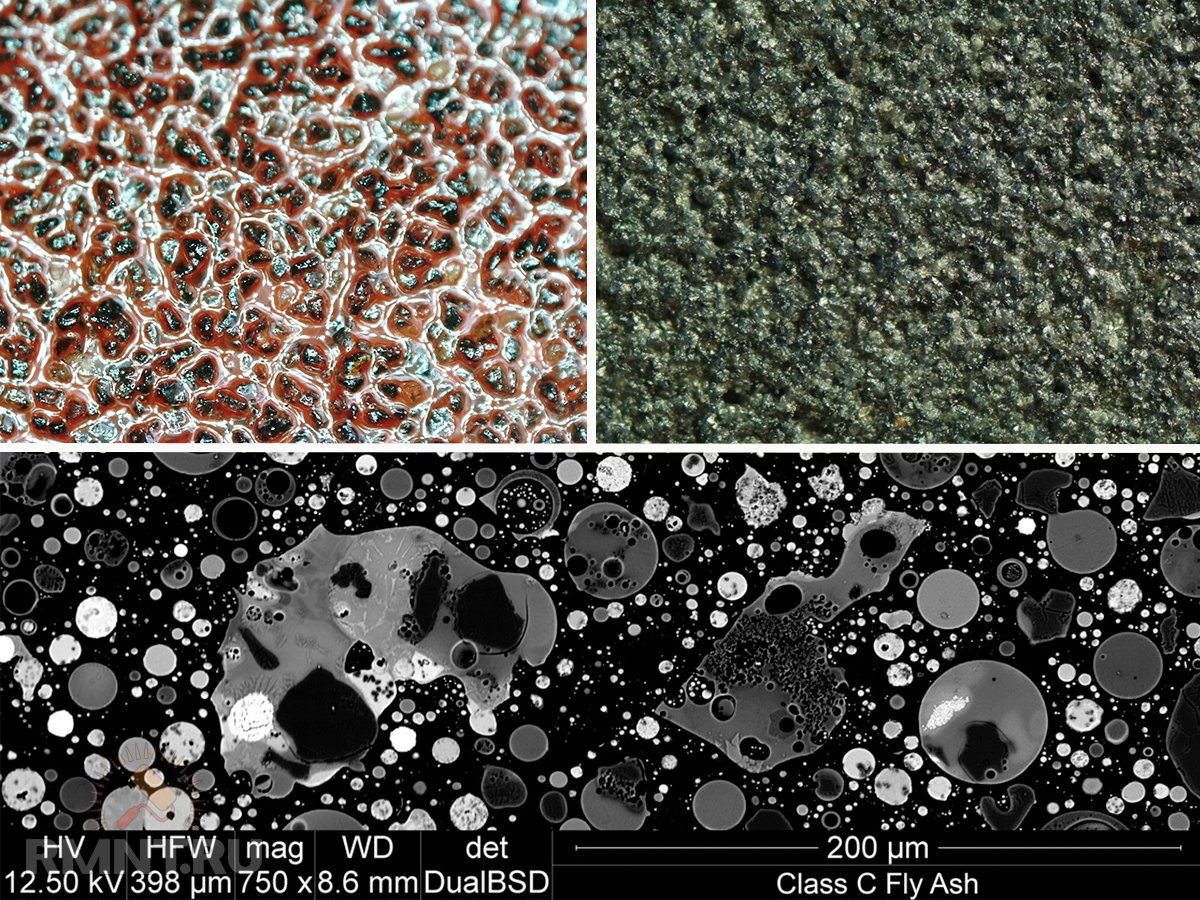
Let's define the scope of sandpaper depending on the grain size:
- up to P80 - for rough peeling and grinding in order to level the surface;
- from P100 to P220 - used in the second stage of grinding, if you need to eliminate small grooves and scratches;
- up to P280 - used for fine grinding;
- smaller skins are already classified as polishing.
You can read more about the exact choice of sandpaper for various purposes.
The rule for choosing sandpaper by grain size is very simple - the higher it is, the smoother the surface will be after processing. But at the same time, the finer the sandpaper, the faster it grinds, and the removed layer of material becomes smaller. It should also be taken into account that the greater the hardness of the material being processed, the coarser the paper can be used for finishing. At the same time, on soft wood, even with a grit in P220, quite visible scratches can remain.
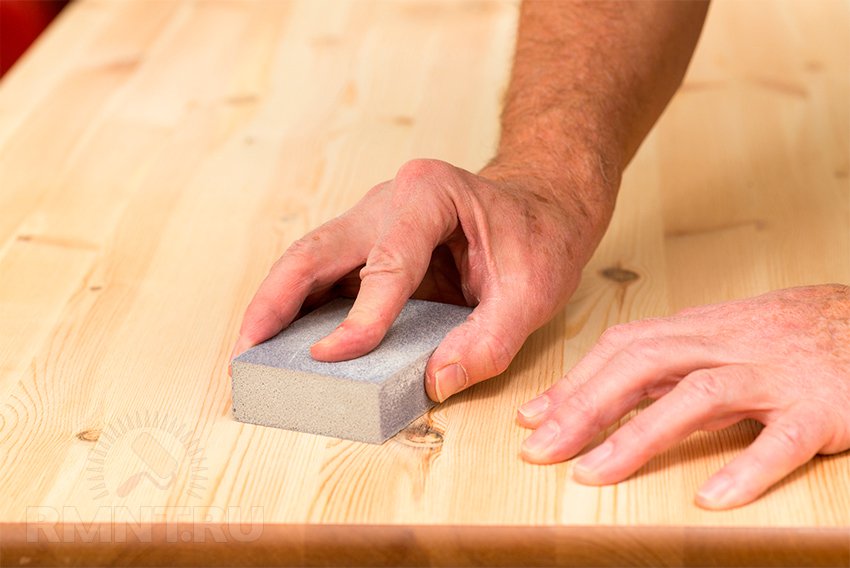
Skins by type of base
Even in a small town, walking through hardware stores, you can find several dozen different samples of sandpaper. They will differ not only in grain size, but also in the method of application. abrasive material, the type of coating and binder, as well as the abrasive material or mixture used. However, in practice, the type of substrate on which the abrasive is applied is of paramount importance.
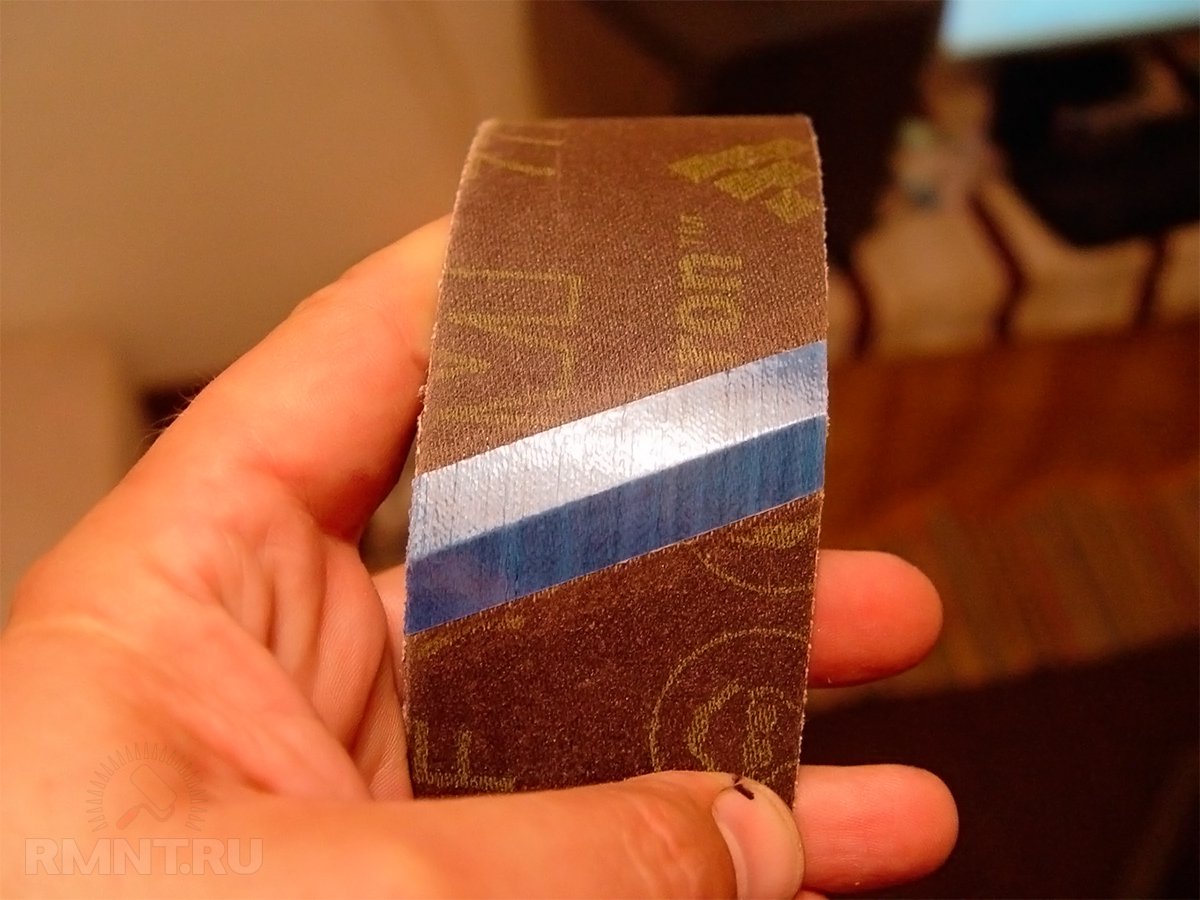
The cheapest and most quickly consumed emery cloth is made on a paper basis. It has few advantages: in addition to the low price, the paper is convenient if you need to quickly tear off a fresh shred for work. The abrasive from such a skin crumbles quite quickly, especially in places of fracture, however paper base makes it easier to process embossed surfaces.
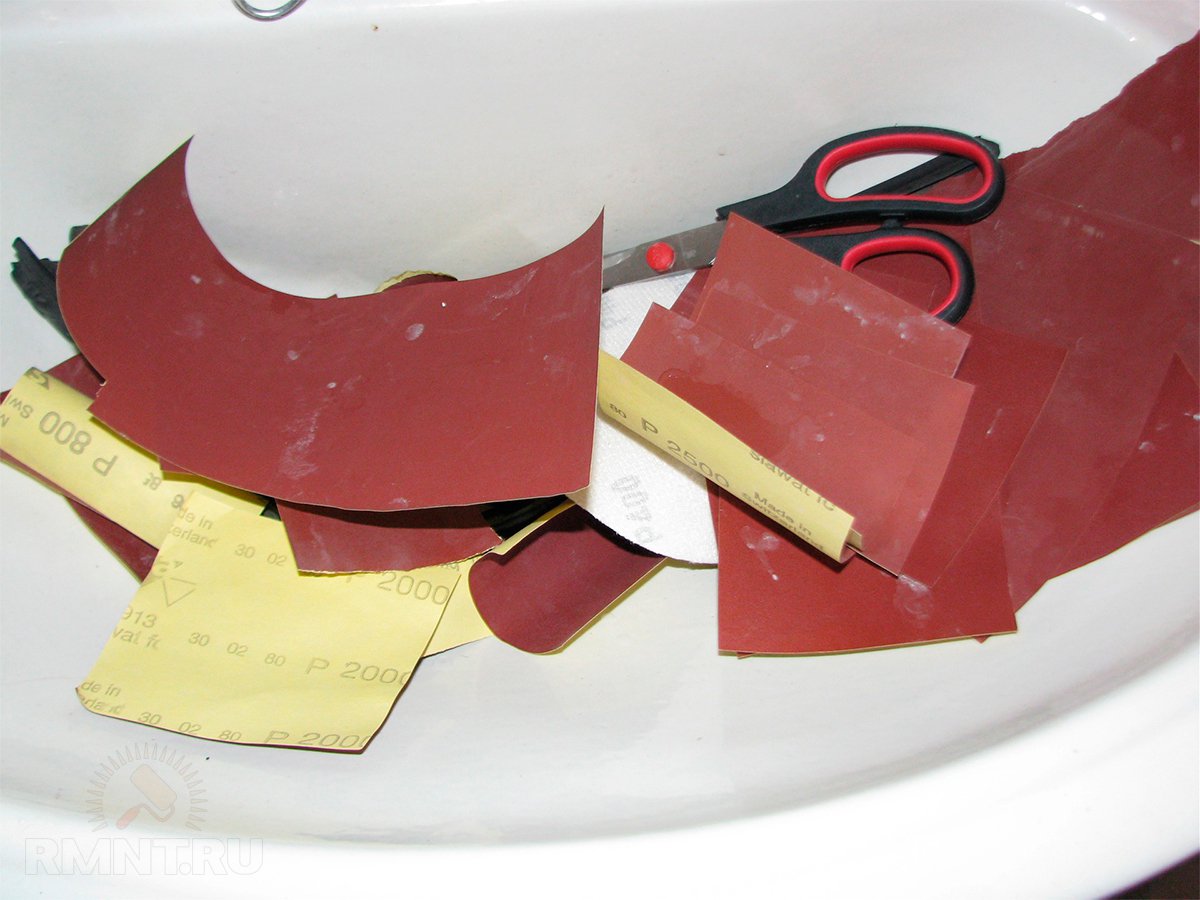
A fabric-based skin has a slightly higher cost, but is much more durable. In many households, half a dozen scraps of cloth sandpaper can be found lying around, which are successfully used from time to time for several years and have not lost their abrasive qualities. It does not do without drawbacks: the fabric impregnated with epoxy is rough, the treated surface is felt worse under it. Also, cloth sanding belts tend to stretch, although this mainly applies to consumables for machining.
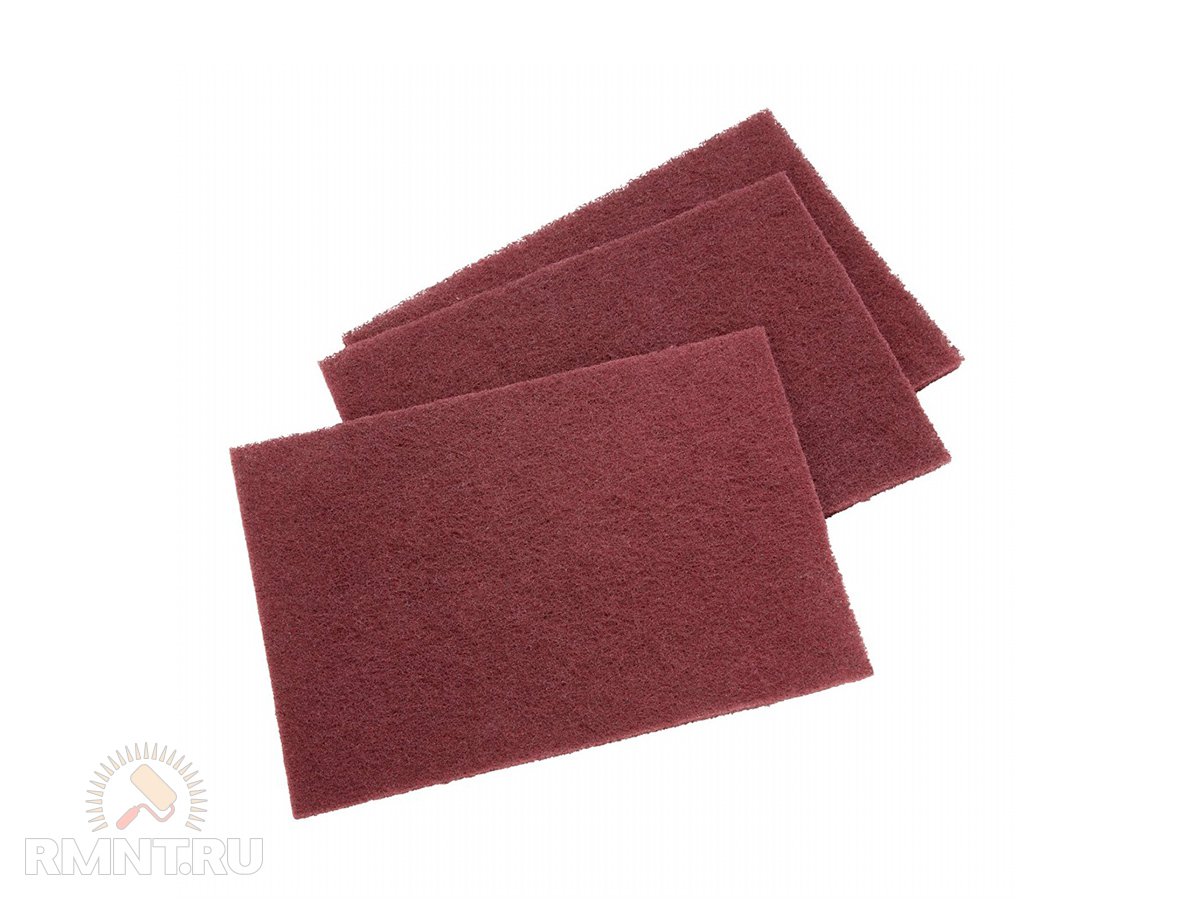
Finally, there is a third type of sanding paper - soft-backed. This includes foam or polyurethane skin, used for finishing embossed wood and plaster parts, and fiber sanding paper. The latter, although it has similar properties as a pressure to the part, is used for fastening to the working body with Velcro, for example, to rotary grinders.
Dry and wet sanding
Depending on the abrasive material and its binder, sandpaper may differ in the admissibility of grinding with surface wetting. In addition to the fact that wet sanding paper is more expensive than normal paper, there are a number of other reasons why this distinction is important.
When removing particles from the treated surface, the friction forces at certain points can be so high that the generated temperature is sufficient to sinter the metal dust. This, in particular, is true for aluminum and most non-ferrous metals: if the skin is not periodically shaken off, it will quickly become clogged and become unusable.

In some varieties of paper, this problem is solved by a special abrasive material. So, silicon carbide, especially applied by electrostatics, is able to crumble, forming new cutting edges, so this paper practically does not clog. However, there can be a lot of particles of removed material, for example, when processing plastic, and then it is necessary to prevent them from sticking together by moistening the sandpaper with water.
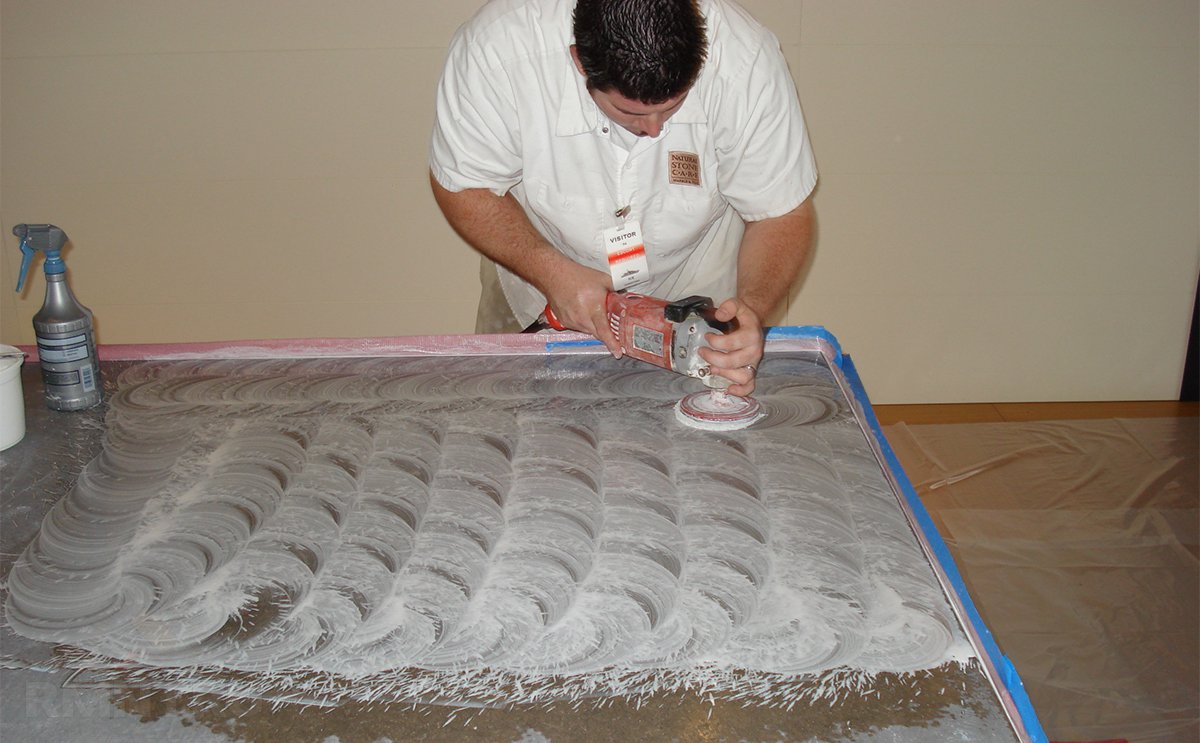 Polishing natural stone, marble or concrete also cannot do without the use of water or special compounds. Wetting improves the quality of grinding and prevents the spread of stone dust
Polishing natural stone, marble or concrete also cannot do without the use of water or special compounds. Wetting improves the quality of grinding and prevents the spread of stone dust
Wetting resistance is determined by the standard, which is indicated at the end of the marking on the back. Paper according to GOST 13344-79 allows work in a humid environment, but according to GOST 6456-82 it does not. There are exceptions, because water resistance is generally determined by the type of binder, that is, glue. Although the type of binder is usually not specified, abrasives bonded with synthetic materials such as bituminous, polyester resins, phenolic varnishes, etc. are suitable for wet processing. Very often, the possibility of using paper for wet work is additionally indicated by the letter "B" or the word Waterproof.
For manual processing
Often home master have to process their products manually. So the quality of grinding is much higher, there are fewer untreated areas. For manual processing, paper is available in sheets, strips and rolls.
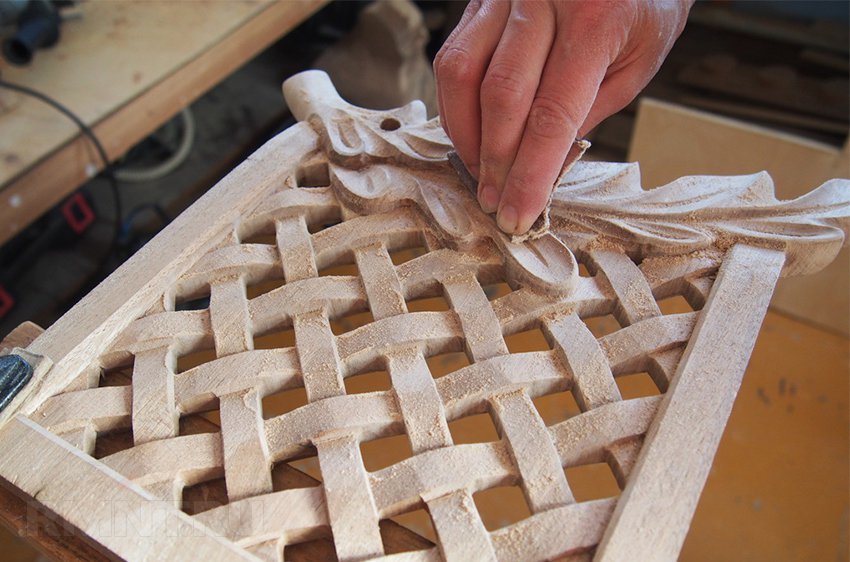
The running types of grit in the economy are tissue paper P60, P80 and P120. Smaller skins usually have a paper base. It is recommended to always keep in stock different numbers of abrasive paper for fine grinding up to P400.
Fabric-based skins above P300 grit are produced primarily for machine processing, although they can be worked with alternate success by hand. The main difficulty is that the abrasive is filled with a solid layer of binder, and manual processing of such a tape is extremely slow, especially at high grain sizes. However, wet grinding with such paper is a pleasure.
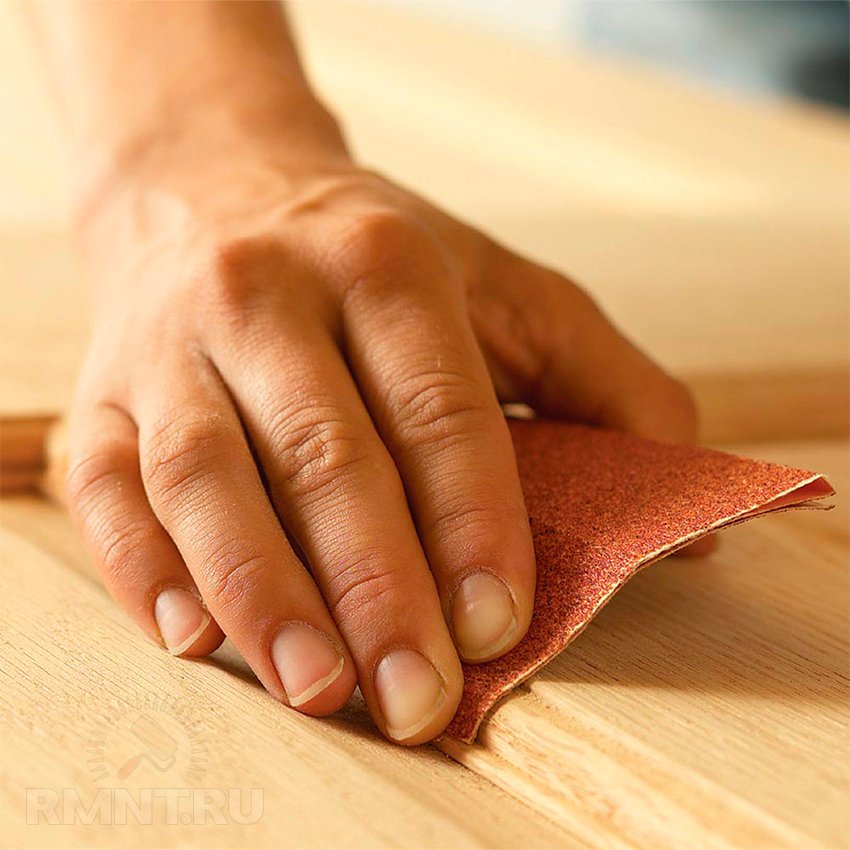
Also, for manual processing, polyurethane grinding sponges will be very useful, which are very convenient for processing parts with small relief. If you are fond of woodworking, always have a supply of foam rubber skins, this is the most effective remedy for preparation for painting or varnishing.
Belts and discs for machine grinding
When buying consumables for grinders, it is difficult to make a mistake. All of them have a specific type and working dimensions - either length and width, or dimensional number, or diameter.
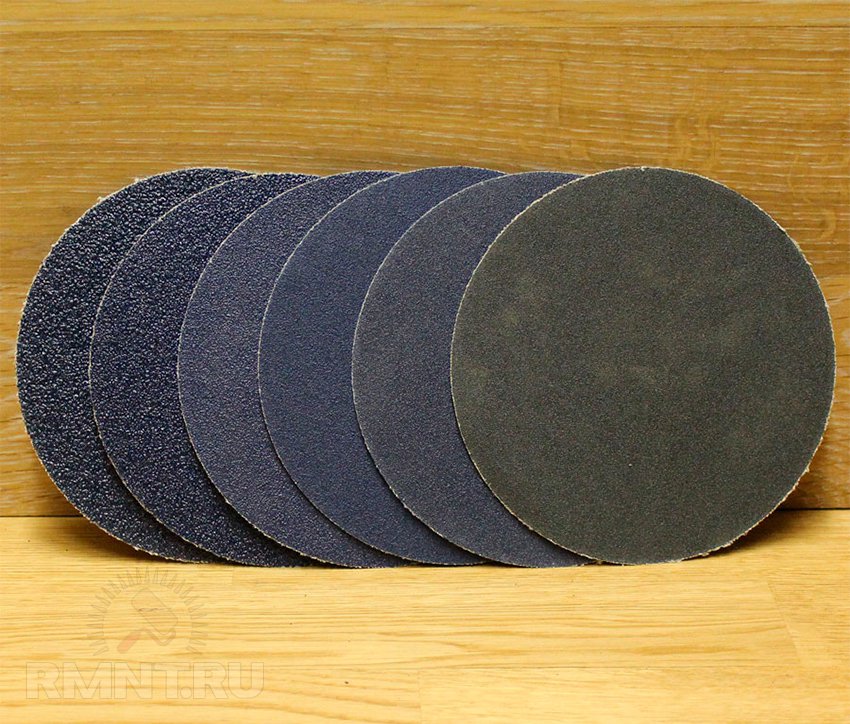
For belt sanders and grinders, cloth-based paper rolled into a ring is used. The length and width in millimeters is the main parameter of such sandpaper, which determines suitability for use with a particular tool.
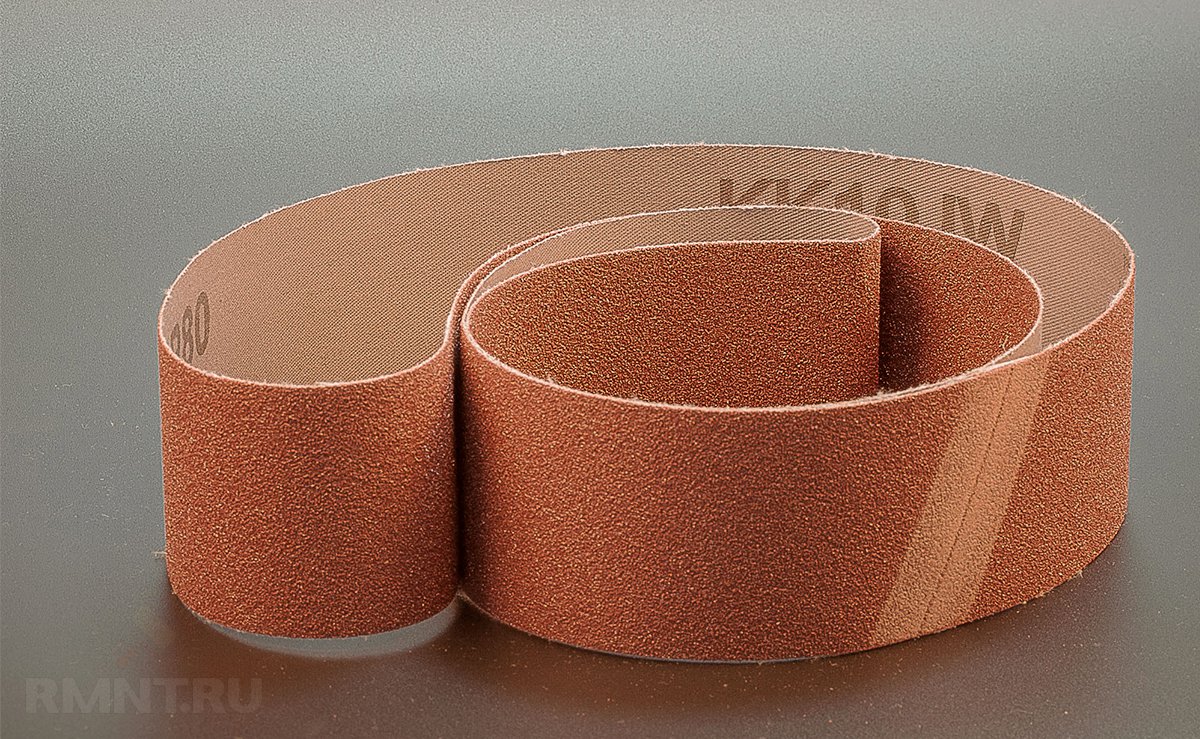
While you can still play around with the width by using a narrower band or tearing off the excess, then bands of arbitrary length can only be used on grinders with adjustable tension. Also note that only one direction of movement is valid for the ring belt, indicated by the arrow on the back.
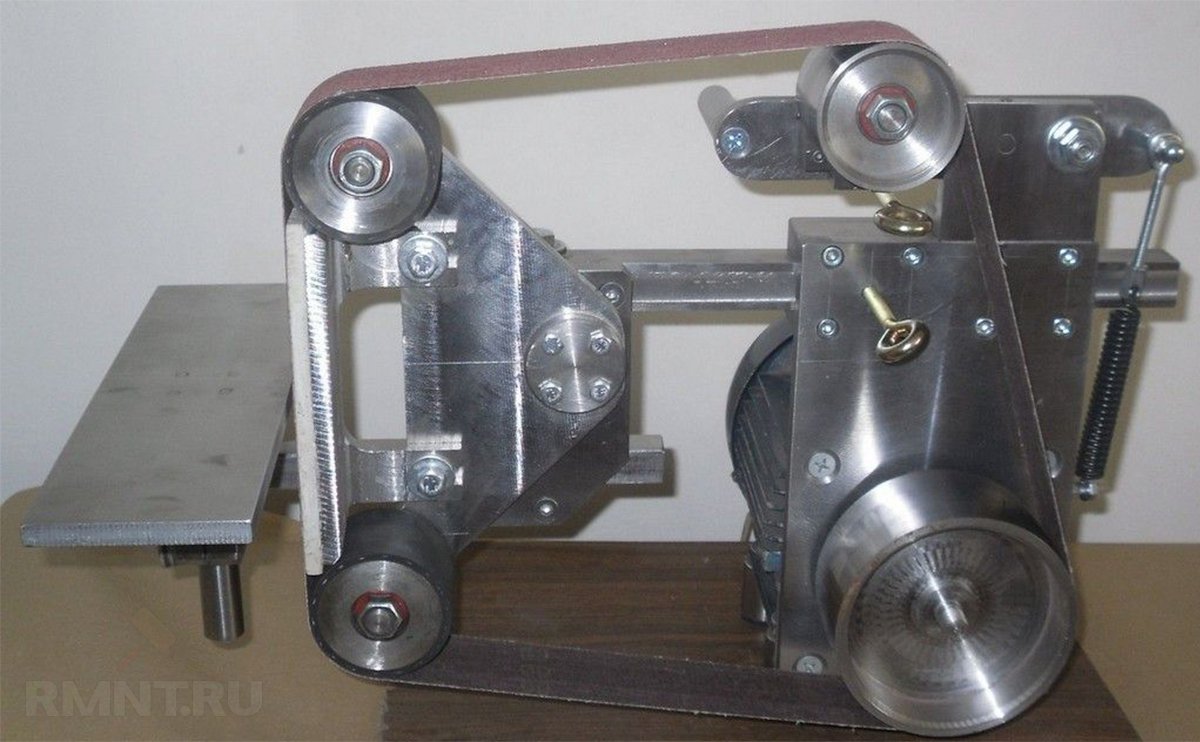
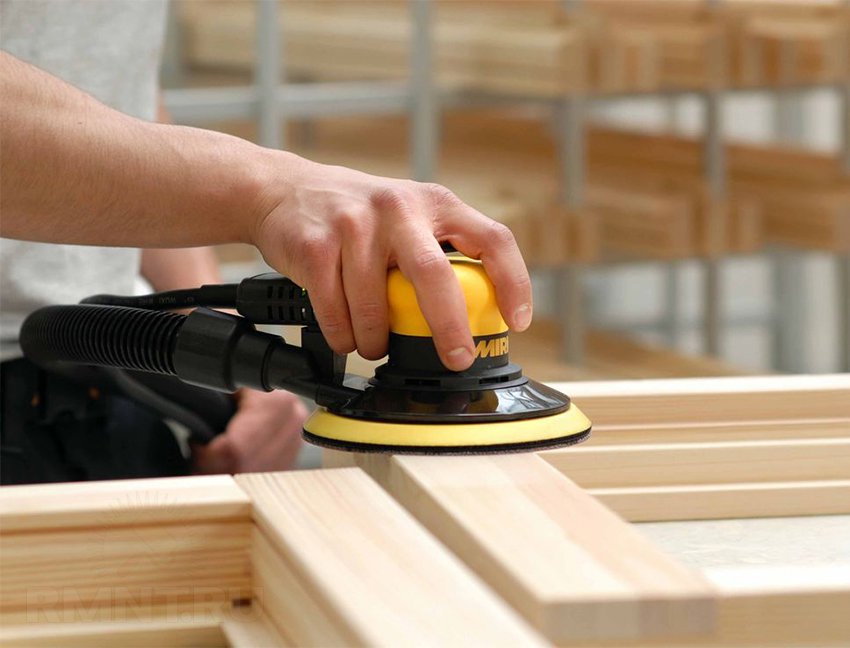
With abrasive paper for rotary and delta sanders, it's even easier. They either fit the size or they don't - the size of suitable consumables is clearly indicated in the instructions for the equipment. When choosing, you should also pay attention to the position of the dust extraction holes. Since we are talking about a power tool, almost all sandpaper in consumables is designed for dry grinding. It remains only to choose the right grain size according to the type of material and the desired surface quality, and then gradually reduce it during processing.
Use sandpaper for more than just sanding various surfaces, but also to prepare the basis for subsequent work. For ease of use, you should stretch the sandpaper on a wooden beam.
Sandpaper is, perhaps, the most indispensable abrasive material made of paper or fabric, coated with abrasive powder. Absolutely any carpentry work, no matter how neatly done, requires finishing and polishing. Sandpaper is different in terms of grain size: from zero to coarse abrasive.
Sandpaper is used not only for grinding various surfaces, but also for preparing the basis for subsequent work.
For ease of use, you should stretch the sandpaper on a wooden beam.
It is known that sandpaper will become much softer in the process and lose some of its properties. But don't throw it away right away. Of course, it will not be as effective as it was originally, but it will become less aggressive. Using used sandpaper will help you avoid buying a new one with a finer grit.
More pliable sandpaper can also be made from new. The abrasive material is attached to a paper or fabric backing with an adhesive. And in order for the sandpaper to become more pliable, it must be stretched. When performing work of any complexity, sandpaper is the price for fine-tuning the piece of work we need to perfection.
What is sandpaper?
Sandpaper can be attributed to the subject of mass consumption. In colloquial speech, the term "SANDING" (emery) is firmly entrenched in her. Sandpaper is an abrasive product, on the paper base of which abrasive grains are fixed with layers of glue or resin. Its main purpose is manual or machine surface treatment. Abrasive paper is the primary source for the production abrasive tools on a paper basis: rolls, tapes, circles, etc. keyword for all these products is the word PAPER.
Story
With the development of industry, sandpaper improved. The history of sandpaper goes back to China. The first mention of it dates back to the 13th century. Crushed sand, finely crushed shells, plant seeds were glued onto parchment using glue from starch or agar-agar. Rough crocodile or shark skin was used as sandpaper. The prototype of sandpaper was "glass paper", because. glass particles were used for its production.
Serial production of "glass" paper has been organized in London since 1833 by the company of entrepreneur John Okay, which developed new technologies for its production. The first patent for the production of sandpaper was issued to Isaac Fisher Jr. (Isaac Fischer) June 14, 1834 in Springfield, Vermont.
In his sandpaper, he used corundum and silicon carbide abrasive grains as abrasive grains. In 1900 Siegener Leimfabrik & Naxos-Schmirgelwerke starts mass production of sandpaper and glass paper in Germany.
With the development of industry, sandpaper improved. In Europe and the USA, there was an active research and development of abrasive materials and tools. In 1916, 3M and in 1925 Klingspor filed a patent for the invention of waterproof sanding paper. This type of sandpaper is widely used in the automotive industry, and the postscript “WATERPROOF” (Wetordry, Wasserfest, Watterproof, Impermable) appeared in its brand. Gradually entrenched standard size sheet 230*280 mm.
Klingspor files patent for waterproof sanding paper
In our time, the history of sandpaper continues its chronicle. New types appear constituent parts, manufacturers and needs in its application.
Marking
In the production of sandpaper, color and alphanumeric markings are applied to its surface. And although each manufacturer has its own name and does not fully disclose all information about the properties, it has common features. Consider some types of Klingspor abrasive paper as an example.
Sandpaper markings, such as PS22 N, PS23 F, PS33 B, PS73 BW, indicate the type and density of the paper base. The abrasive grain size marking is indicated by the Latin letter P and numbers from 24 to 2500. Within the concept itself, the term “zero sandpaper” came into use. in different standards, you can independently determine its compliance with the FEPA standard and GOST 2007.
color coding At present, the color coding of sandpaper has lost its relevance on the scale of the abrasive tool market. A number of manufacturers, in order to attract buyers, offer all possible color solutions. And only a few remain true to the traditions laid down many years ago.
The fact that abrasive paper has water-resistant properties is indicated by the inscription WATERPROOF. This type of sanding paper has increased elasticity and strength.
Sandpaper abrasive tools
Paper base compared to other types (fabric, film) has a lower cost. In practice, abrasive paper is used to produce ready-to-use abrasive tools: rolls (rollers), strips, sheets, grinding wheels, an endless belt. Sandpaper abrasive tools are used to process all available materials. They are suitable for hand sanders, hand grinders and machine tools.
Classification by numbers (grit)
Today, sandpaper is produced with grit from 12 to 4000.
Grit is the amount of abrasive particles per 1 square inch of the skin. The lower this number, the coarser (larger grains) sandpaper.
Conventionally, it can be divided into 3 groups:
Coarse-grained (12-80). It is most often used to remove various varnishes and paints from the surface, that is, it is used for primary processing. After such rough grinding, scratches usually remain, which need to be processed with finer sandpaper.
Sandpaper medium grit (80-160). Usually used after coarse grit for smoothing and leveling wooden surface. Such paper leaves little marks and is used for intermediate processing of the material.
Fine-grained (160-4000). Fine-grained sandpaper allows you to completely remove all bumps and scratches from the surface of the tree. It is used as a finishing treatment, immediately before painting.
Sandpaper base
Paper base. Paper-based sandpaper is the cheapest, is able to withstand high mechanical loads and can be treated with a water-repellent agent. Even the smallest fractions of grinding material can be applied to such a base, but its wear resistance leaves much to be desired.
Fabric base. Fabric-based sandpaper has good wear resistance and can be impregnated with special resins to protect against moisture. It also has good elasticity and tear resistance.
Combined base. Sandpaper on a combined basis (paper + cloth) is used in cases where, with high mechanical loads, a grinding surface with high level grit. Such paper has collected all the best properties of the previous types and is the most expensive.
In addition to grain size and base material, we also recommend paying attention to the amount of abrasive.
Thus, fully coated sandpaper has higher strength and is suitable for processing hard materials.
Products with a semi-open abrasive coating are designed for more soft materials and better cleaned during use.
We hope that this classification of sandpaper was useful to you and you chose it correctly!
Grinding skin production technology
Impregnation gives water resistance and increased strength to the base special formulations e.g. rubber latex. On a glue-applying machine, a binder is applied, heated to 30 ° ... 50 °.
Electrostatic, suspension and mechanical are methods of applying abrasive material to the base. For mechanical way use a bulk machine with a hopper feeder. Excess sanding material is removed by a special device.
Grinding skins are dried in special ovens, where heating is carried out with steam, gas, infrared radiation lamps, etc. The drying temperature depends on the type of binder: with skin glue - 25 ... 45 C. With glue SFI-3039 or SFZh-3038 - several stages of drying: 20 ... ..120°С. Pentaphthalic and oil varnishes require a temperature of 120 ° C, formaldehyde resins - 100 ... 120 ° C.
The fixing layer of the ligament is applied, like the main one. Drying of the fixing layer is similar to that given for the base layer. If the skin is made on the basis of phenol-formaldehyde resins, the final processing is carried out at a temperature of 150°C.
Stabilization is an operation for non-water resistant skins. It provides them with elasticity, moisture, evenness. The skin of small numbers of granularity is moistened with water from the non-working side, put on the drum and dried at a temperature of 77°C. The skin of large numbers is “tormented” at 65% humidity during the day in a draft.
The given factory technology proves that at home, bypassing some operations, you can make a skin low quality by applying crushed glass or "pollen" from an abrasive wheel.
How to use or practice.
This practice is so diverse that I will cite only a few cases. A small object for grinding with sandpaper is fixed with the surface up. Blocks with sandpaper (11, e) are placed on this surface and moved. Block dimensions 185*84*75 mm, weight - 0.9 kg. The pads are made of hardwood (beech, oak, birch), impregnated with drying oil, sanded and coated with light varnish. Each of the pads has two depressions. The folded ends of the skins are hidden in the hollows, which better preserves the tightness of the skin. The soft base is attached to the bottom block with BF-type glue. Foam rubber 4 ... 6 mm thick, overcoat cloth, etc. can serve as this soft base. Cloth-based sanding pads last longer than paper-based sanding pads.
The graininess of the skin is reduced with each subsequent processing. This ensures a high surface finish. The direction of movement of the blocks is periodically changed to perpendicular to the risks arising from the previous treatment. It is preferable to finish metal surfaces with sandpaper with a working layer of white electrocorundum.
A device for grinding surfaces () has a variety of uses. It is used, in particular, for sanding walls and ceilings that have dried well before applying the paint layer. Fixture dimensions 260*180*75 mm. weight - 0.5 kg. The base and clamping bar of the device are made of aluminum, duralumin, wood, etc., the handle is made of a metal tube. For processing putties and primers, a skin with a working layer of silicon carbide is preferable. The very base of the device is made both curved and planar.
The skin is applicable not only for removing a layer of metal. Due to the abrasive materials, slippage of the skin is unlikely on almost any surface. So the skin is used, in particular, for unscrewing tightly screwed corks or lids.
Advice
How to choose?
You will probably agree with me that in many areas of our life, at work and at home, we use various types of sandpaper or as it is also called - the skin? When we clean hardware for painting or get rid of rust on the metal. When working with wood, grinding also takes place. When we paint doors or windows, then after a layer of varnish or paint we also process it with sandpaper. Woodcarvers actively use sandpaper to finish their products and to give them a marketable appearance. Builders use it, cleaning and grinding. Yes, in the end, varieties of skins are also used in everyday life, for example, pumice stone for pedicure. But what types of sandpaper should be used for certain jobs? For sanding wood, use a sandpaper with a coating of quartzite, silicon and glass. At one time, flint skin was considered the best. There are also emery and corundum skins. But they are not suitable for, because the grains of the abrasive are dark and pollute the surface of the wood. You have probably seen that sandpaper is paper-based and fabric-based. Single sheets and rolls. Waterproof and plain. Rough, medium and fine. Sandpaper waterproof on the reverse side has the word "waterproof" and its base has green color. But what are those strange letters on it? These are the designations of the abrasive: "C" - glass; "KR" - silicon; "KV" - quartzite. The numbers indicate the skins. Especially small or micro-skins are indicated by the letter "M". Pumice is also used for polishing. This material is of volcanic origin. It is very light and porous. Usually greyish white. Pumice is easy to cut with both a saw and a file, and also to grind into powder. Only hard wood species are polished with such pumice at the final. Various voids are filled with pumice powder before varnishing and polishing, as a filler. When used, pumice is soaked in water or oil for wet grinding of paintwork.
Below is a table of numbering sandpaper.
Grain size in mm Skin number
I hope you find this material useful.
Specifications
|
Questions of the composition of the abrasive and adhesive bases are omitted, because, of course, the stronger, the more expensive.
|
||||||||||||||||||||||||||||||||||||||||||||||||||||||||||||||||||||||||||||||||||||||||||||||||||||||||||||||||||||||||||||||||||||||||||||||||||||||||||||||||||||||||||||||||||||||||||||||||||||||||||||||||||||||||||||||||||||||||||||||||||||||||||||||||||||||||||||||||||||||||||||||||||||||||||||||||||||||||||||||||||||||||||||||||||||||||||||||||||||||||||||||||||||||||||||||||||||||||||||||||||||||||||||||||||||||||||||||||||||||||||||||||||||||||||||||||||||||||||||||||||||||||||||||||||||||||||||||||||||||||||||||||||||
DIY
Throughout the history of civilization, a person has been scraping, cleaning and polishing something. In ancient times, he used various improvised materials for this, ranging from river pebbles and small pebbles to pieces of the raw skin of dead animals. Now the industry offers him endless the lineup equipment, tools and materials, the simplest of which is sandpaper or sandpaper.
The first known references to sandpaper as we are used to seeing it can be found in the 13th century in China. For its manufacture, parchment, glue from natural substances and fine dust from shells and river stones were used. In Europe, the palm for the invention of sandpaper belongs to the Englishman John Oakey in the early 19th century, who figured out how to stick glass dust and sand to sanding paper. musical instruments. A further contribution to the history of sandpaper was made by enterprising Americans, who were the first to patent and begin mass production of this abrasive material.
Today, not only with your own hands, not a single production can be imagined without the operations of stripping, grinding and polishing. All this is done with various abrasive materials. Not the last place here belongs to ordinary sandpaper or paper.
Sandpaper (skin) When choosing sandpaper (skins), you should pay attention to a number of characteristics:
1) grain size - the larger, the lower the paper number, for example, P20 and P150. This characteristic affects the quality of the surface finish. Smaller numbers are intended for peeling and rough cleaning, and the highest ones are for the finest grinding and polishing of the finished surface;
2) abrasive material - silicon carbide, electrocorundum, emery, etc. The latter is practically no longer used; the most common is the harder silicon carbide.
3) granularity - the density of grains per unit area of sandpaper - the smaller, the less the formation of lumps and "clogging" of the skin with dust;
4) base - fabric, paper or fiber. Paper - more flexible, but fragile, fabric - denser, but more rigid, fiber - used for special purposes;
5) waterproof or not - important for those who work in the conditions of the use of coolants;
6) there is still an abrasive mesh and grinding sponges - they are used for cleaning and grinding building materials during a DIY repair.
Sandpaper (sandpaper) "Crib" for choosing the grain size of sandpaper or sandpaper:
if you see the designation P12-P60 on paper, then this sandpaper is intended for rough roughing and stripping, if P80-P120 is suitable for medium grinding, smoothing and removing bumps; P150-P180 is ideal for fine sanding, P220 and above for picky professionals for very fine final sanding.
And, finally, a couple of tips for working with sandpaper (paper) when doing do-it-yourself repairs:
1) start work with stripping and stripping with small numbers, finish with grinding and polishing with large numbers;
2) for wet sanding, use only moisture-resistant sandpaper;
Sanding paper. Grain - No. 8. (roll=30m)
Sandpaper, also called "sandpaper", is indispensable in construction, grinding material made from paper or fabric, with the application of abrasive powder. Sandpaper, (sandpaper...
Price 245.95 rubles. per linear meter
Firms
How to start a sandpaper business
Sandpaper (grinding) paper has a fairly wide application. It is used for cleaning surfaces before painting, gluing, for insurance against slipping (for example, in skateboards), for removing dirt, etc. The use of sandpaper in many industries, repair enterprises provides a huge demand for this product. Grinding manufacturing business proper organization production and established distribution channels will certainly be cost-effective.
The device and material of sandpaper
Sandpaper consists of a base and an abrasive (grinding material). Its main characteristics are grain and corn. The last parameter refers to the size of the abrasive particles covering the base of the paper. Grit refers to the density of the abrasive covering the backing, i.e. the number of particles per square inch. According to this characteristic, the following types papers described in GOST 6456-82:
- sandpaper with grit 40-60. It is the roughest, has large abrasive particles located far from each other. Used for primary processing of material.
- 80-120 - Medium grain paper. Smoothes the surface, removes irregularities.
- 150-180 - fine sandpaper. Used for final polishing.
- 220-240 is very fine sandpaper. It is used for grinding material for stripping before coating with paint.
- 280-320 is already extra-thin paper. She removes dust specks and marks at the final stage of coating the material.
- 360-600 is the finest sandpaper. It is used very rarely to remove light dirt.
There are the following types of paper, depending on the basis:
- paper based sandpaper. Paper is a cheap and easy-to-manufacture material, but it is not strong enough and not waterproof. Although, due to its thinness, the smallest abrasives can be applied to it.
- sandpaper on a fabric basis (coarse cotton, polyester). The fabric is very durable and water resistant, but expensive and lends itself to elongation when working.
- paper on a mixed basis (fabric glued to paper).
- fiber based. Usually used to make fiber discs.
Various materials are also used for the abrasive. The most widely used is aluminum oxide. It has high cutting ability, resistant to high pressure. It is a fragile material - when used, its granules break easily, but this only increases its shelf life. Ceramic abrasive is the hardest, used for rougher surfaces. The second hardest is silicon carbide, it is used in the processing of glass, plastic, metal. The softest material is garnet. Used in the final stages of polishing or to lightly soften the surface.
According to the type of abrasive application, it stands out sanding paper:
- with open and semi-open filling. Has interstices between particles that cover 40 to 60% of the base surface. Used for grinding soft materials;
- with closed filling (solid). Abrasives cover the entire surface of the paper. Grinds hard materials well.
Production technology
The production of sandpaper takes place in several stages. First, it is passed through a ramming machine, where drums with rubber stamps held by magnets display technical information on the fabric. Then the base is impregnated with waterproof substances (latex, rubber). The fabric passes under the press where the other drums apply thermoset adhesive to the non-printed side. Coating density is controlled by a computer system. Phenol-formaldehyde and urea-formaldehyde resins, lacquer-based glue, glue based on epoxy resins, skin glue. Then comes the step of applying the abrasive. There are several ways.
Mechanical. Abrasive particles fall in a chaotic manner from a bulk machine with a feed hopper, excess material is removed. With this type of application, less aggressive particles are obtained.
Electrostatic. The base is pulled underground to an electrostatic section where a hot and humid atmosphere is maintained. The particles are poured onto a conveyor running in a container which moves the particles under a rotating cloth between the electrodes and the base. An electric field is created that causes a mini sandstorm. Under the action of an electrostatic field, negatively charged abrasive particles are evenly pressed into the base. This method produces a more aggressive sandpaper.
A piece is cut from the almost finished paper to test the quality.
Next, the paper is dried in special ovens. The temperature depends on the binder (glue): formaldehyde resins - 100 ... ..120°C), pentaphthalic and oil varnishes - 120°C, skin glue - 25...45°C.
After that, a fixing layer of the ligament is applied and dried again. Finished rolls of paper are sent to the warehouse to await cutting. Some rolls are cut into huge sheets: they will go for use in heavy engineering. On the special machines cut emery discs, skateboard protection tapes, etc.
To service the entire production workshop, you will need to hire about 10-15 people.
Equipment and raw materials (cost)
For the production of grinding, the following raw materials and equipment should be purchased:
- skin glue. It will cost somewhere around 200-250 rubles per kg;
- silicon carbide - $500-2400 per ton;
- cotton fabric - 18-30 rubles. per running meter;
- electric furnace - from 78 thousand rubles - up to 450 thousand rubles;
- drying chamber - from 60 thousand to 500 thousand rubles;
- coating machine (for applying glue, marking) - about 450 thousand rubles;
- dispenser bins (for filling abrasive) - from 5000 rubles;
- belt conveyor - from 23 thousand rubles per linear meter;
- drive station and return station - from 124,000 rubles.
Investments
The initial investment for the annual production of sandpaper will be about 3.5 - 4 million rubles. When selling 5,000 meters of paper per year at an average price of 280 rubles per linear meter, the business will pay off in 4-5 years.
Requirements
According to GOST 6456-82, the following information should be applied on the reverse side of the sandpaper:
- conditional designation of products;
- What material is the base made of?
- the abrasive used, its content and size;
- type of material used for gluing the abrasive;
- waterproof or non-waterproof;
- release date and batch number;
- technical control stamp;
- image of the State Quality Mark according to NTD for sanding paper;
The winding of the sanding paper into rolls should be even and dense, with the working layer outward, preventing the formation of wrinkles, folds and crumpled places. Each roll of sandpaper must be wrapped with a double layer of paper in accordance with GOST 18277-72, GOST 2228-81 or GOST 10127-75.
The roll must be sealed at the joint. The layers of wrapping paper should cover the ends of the roll and ensure its safety during transportation.
Transportation of materials takes place subject to the following conditions:
- the goods should not be subjected to strong shocks, shocks, moisture;
- during transportation, the material should be protected from exposure to precipitation;
- The goods are accompanied by the necessary documents.
Sandpaper should be stored in dry, ventilated areas. Its rolls are stacked in dense rows, alternating in the longitudinal and transverse directions. Store at a temperature not lower than plus 2 °C. Shelf life is 12 months (more details on the GOST websites).
Sale
Ways to sell grinding should be sought based on its purpose. It can be industrial enterprises, and stores of goods for repairs, goods for woodworking, however, sandpaper is sold in every hardware store. Therefore, the main goal will be the production of high-quality, cheap goods and establishing contacts with buyers.
Christina Cherukhina
(с) www.openbusiness.ru - portal of business plans and manuals
Abrasive materials are various kinds and types. One of them is designed for grinding and eliminating defects in the form of irregularities from surfaces. Any hardware store has this material in its assortment.
« Sandpaper" is the common household name for an abrasive material, which is an abrasive powder (silicon carbide or electrocorundum) deposited on a paper or fabric base. The correct name for this material, used for roughing or finishing parts and tools, is an abrasive cloth or sandpaper.
Abrasive cloth (sandpaper) is widely used in construction, decoration and installation work for cleaning, grinding and polishing various surfaces. Naturally, the surfaces to be machined have varying degrees of strength and rigidity. Therefore, for different types surfaces, various types of sandpaper are used, the marking of which reflects the features of the product.
Grain index, the main indicator of this material and the way in which the abrasive layer was applied determines what type of sandpaper belongs to.
Grain refers to a certain indicator, or how many abrasive particles per square inch. At the moment, it can vary from 12 to 4000. The smaller this figure, the larger the grain will be. Depending on this, there will be a different purpose of sandpaper.
Sandpaper grit
According to the graininess index, the following groups of sandpaper are distinguished:
1. Coarse-grained (12-18). Designed for initial surface treatment and cleaning it from paint or varnish. Sanding with coarse paper is rough and leaves deep scratches. Therefore, in the future, you will have to use less grainy paper.
2. medium grain (80-160). It is necessary for intermediate processing. Using such paper on a wooden surface can smooth and level it. Unlike coarse-grained paper, although medium-grained paper leaves scratches, they are not so obvious.
3. fine-grained (160-4000). It is intended for preparation of a surface for drawing paint. Such paper will remove all scratches and irregularities from a wooden surface without difficulty.
The variety of sandpaper is determined by its basis. It can be of several types:
1. tissue . Its advantages will be high wear resistance. It is also possible to give it moisture-proof properties by impregnating it with special resins. In addition, the paper base makes the sandpaper elastic.
2. Paper . More cheap option but also less durable. At the same time, it withstands heavy loads and mechanical stress. Has water repellent properties. Represents the possibility of applying the smallest grains.
3. Combined . This is sandpaper on both of the above bases at the same time. Accordingly, it absorbed all the advantages of both types of papers. Hence its high cost. Designed for heavy duty applications mechanical type when high grit sandpaper is needed. Anyone can buy sandpaper with a combined base via the Internet.
The grit size of various types of abrasive grains is measured in hundredths of a millimeter and corresponds to the specific tasks of using sandpaper. If in the marking of the abrasive cloth the grit number is 24-30 (maximum coarse) - it is used for roughing surfaces and removing scale. Grit from 40 to 60 allows you to use paper for medium sanding, 80-100 - for fine sanding. Grain sizes from 120 to 240 require finishing and especially fine grinding. Even finer grains up to 2500 are used for polishing.
It will help you choose the right type of abrasive cloths. In addition to grit, in the marking of emery cloths applied to reverse side, a number of other technical characteristics can be indicated:
- purpose (for processing metals or materials of lower hardness);
- method of applying abrasive to the canvas;
- canvas dimensions (width and length);
- web base material (moisture resistant or non-moisture resistant paper, fabric);
- type of abrasive grain (aluminum oxide, silicon carbide, flint, garnet);
- the size of the main fraction of the abrasive and its content;
- the chemical composition of the glue (mezdrovy or synthetic glue, combined binder, phenol-formaldehyde resin, amber varnish);
- abrasive wear resistance class.
Recall that marking is called an alphanumeric code in which a lot of information is encrypted. In technology, a huge number of various materials, for example, steels, as well as various machines, fixtures, tools and much more.
The sandpaper code contains the following information:
- type of abrasive;
- type of base material;
- type of binder between the base and the abrasive;
- method of applying working grains;
- base material properties;
- water resistance.
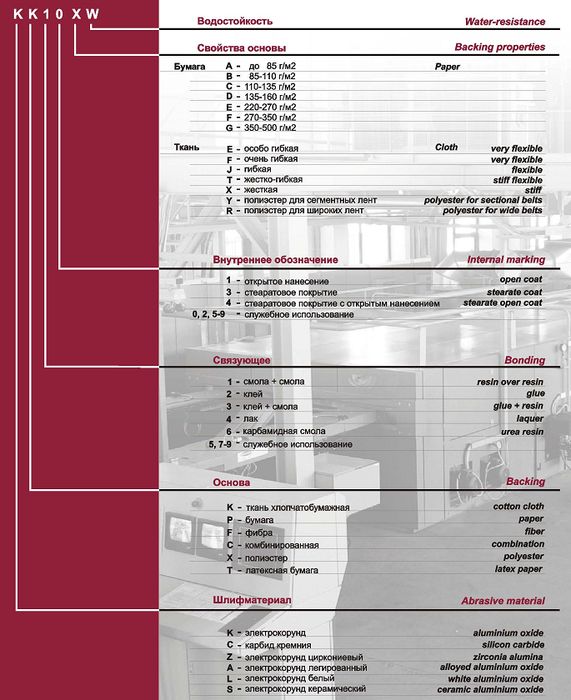
The marking of sandpaper accurately indicates all its characteristics. With its help, you can easily select the right abrasive cloth for machine or hand grinding.
In the sandpaper marking, the number follows the “P” symbol, which means that the abrasive is flexible. There are materials on the market with a fairly wide range of grit sizes from 22 to 2500. Below, we will consider only the types of sandpaper most used in construction activities.
- P40 - P60. It is used for rough cleaning of wood, rather even in cases where it is necessary not to grind, but to grind off part of the wood, giving it the necessary shape.
- P70 - P120. Suitable for most jobs where it is necessary to smooth or clean the surface, for example, from paint.
- P150 - P180. Ideal for final surface treatment before carrying out finishing works. An example is the final cleaning of a previously painted surface before repainting.
- P220 - P360. Suitable for intermediate surface treatment, usually used to treat an applied coat of paint, before applying the next one, to remove streaks, etc.
- Sandpaper with numbers from 400 is already used to a greater extent for polishing already finished surfaces, if necessary.
- Grades of paper with an abrasive size of 1000 microns are often used only in the professional activities of auto repair shops, carpentry, furniture workshops, etc.
For fine-grained types of sandpaper, there is a classification.
- Sanding hardwood P240, P280 5-H, M63
- Polishing, grinding before painting P400, P600 M28, M40; 2-H, 3-H
- Grinding of ceramics, plastic, metal Р1000 М20, 1-Н
- Polishing R1200, R1500, M14, M10, M7, M5 R2000, R2500 H-0, H-00, H-01
There are other designations on the back of sandpaper that can be used to determine what its basis is, manufacturing technology, type of abrasive material, etc. Here are some examples:
- if there is no separate letter, then this paper is rolled. The sheet has an index "L";
- "1" - designed for grinding soft materials;
- "2" - for grinding metals;
- the letters L1, L2 and M denote wet-strength paper;
- the letters P warn that the paper is afraid of dampness.
There are a number of other designations, but they are of interest only to a specialist, and they do not play a special role for the practical use of sandpaper.
Type of abrasive
- Garnet It is a naturally occurring abrasive that does a good job of sanding wood. The paper with it has a comparative softness, therefore it “seals” the structure of the tree well, allowing the paint to be evenly distributed over the surface.
- Silicon carbide very durable material. Skins with this type of abrasive are indispensable in the processing of metals, painted parts, plastics, fiberglass products.
- Ceramic abrasive will be required at the stage of wood formation and its alignment. That is, it is used in rough types of sandpaper, and is more common in the form of sanding belts. Differs in high hardness.
- Alumina it is characterized by fragility, which "plays into the hands" in that during the processing of surfaces by it, the abrasive "breaks" from heat and applied efforts, forming new pointed edges that continue to work. That is why the service life of such a skin can be impressive. It is used more often in woodworking industries.
source abrasives.ru, remontim-sami.ru, better-house.ru, strport.ru
Sandpaper for wood is an indispensable tool for woodworking, which has been known to mankind for a very long time. Currently, there is a large assortment of it on the market, which can complicate the choice for a beginner.
In this article, we will get acquainted with existing species sandpaper and its classification.
General information
Sandpaper first appeared in China back in the 13th century. In those days, it was made from sand seeds, shells and natural glue. True, the technology of its production was further developed only in the nineteenth century in England thanks to the inventor John Oakey.
He came up with the idea of using ground glass to make sandpaper. As a result, sandpaper began to be used for wet grinding, as well as polishing knives. Currently, there are many options for the skin, which differs in grain size markings and some other parameters.
Types of sandpaper
So, modern sandpaper for wood differs in the following ways:
- abrasive;
- Appointment;
- The method of applying the abrasive;
- grit size;
- The place of manufacture, since some of its operational qualities depend on it;
- Water resistance.
Below we will take a closer look at all of its types.
Types of abrasive
Natural emery is the result of mixing magnetite with corundum. However, in modern conditions, these materials are practically not used. The most common types of abrasives are:
| Type abrasive | Peculiarities |
| Electrocorundum | The most rigid type of skin, which has excellent cutting ability, as well as resistance to pressure. This abrasive is obtained by reducing melting in the charge. |
| Silicon carbide | It is a very sharp, but at the same time fragile grains that crumble under pressure. Get this abrasive from an alloy of graphite and silica. Such a skin is often used for processing metal and plastic. |
| Pomegranate | Rather fragile abrasive, but at the same time allowing you to get a perfect smooth surface. Therefore, it is often used for wood processing. |
| Diamond | It is the hardest and most durable type of abrasive, but at the same time its price is very high. Therefore, this sandpaper is not used for wood processing. |
Note! On sale you can find sandpaper in rolls or cut sheets. In addition, there is a Velcro skin, which allows you to attach it to the holder, for more convenient DIY work.
Application technology
Some operational properties skins depend on the method of applying the abrasive.
Currently, the following methods are most often used in production:
- Mechanical application- under the influence of the forces of gravity, the particles are applied to the canvas in a chaotic manner.
- electrostatic method– negatively charged particles in an electrostatic field are attracted to the adhesive base. Peculiarity this method is that the emery layer is very sharp.
- With the help of binders- a material that is more durable than an abrasive, serves as a binder between the canvas and the emery layer.
- Using adhesives and resins- not infrequently, the latter have anti-mud and antistatic additives that increase the durability of the skin.
Note! For matting surfaces, a special special fibrous skin is used, which is nonwoven fabric, made of mesh and impregnated with abrasive and resins.
In the photo - coarse-grained sandpaper
Grain
According to the density of the grains per square inch, or, more simply, according to the grit, sandpaper differs in the following types:
Thus, choosing which sandpaper to sand a tree, you should focus on the type of processing. However, in any case, fine sandpaper is not used for wood processing, as it quickly clogs.
Marking
Marking depends on the country in which the sandpaper is made, since each country has its own backbone.
The following foreign groups are distinguished:
- Japan;
- Canada;
- China.
In addition, there is a generally accepted FEPA standard that complies with Russian standard. This system is based on the designation of the number of grains, which can be from 12 to 5000. The more grains, the less grainy the skin is.
For example, the P22 / 24/36 skin is intended for roughing, as it contains large grains, and the P240/280 wood sandpaper is used for. P2000/2500 brand sandpaper is used for polishing paint and varnish coatings.
Water resistance
Another important parameter of the skin is water resistance. It should be noted that moisture-resistant sandpaper is often used for woodworking in industrial settings, in particular, for the manufacture of furniture.
This consumable It is also characterized by increased elasticity due to the use of a fabric base and special resins. Experts recommend soaking in water for some time before using it. However, it should be borne in mind that the instructions for using sandpaper largely depend on the type of operation being performed.
The waterproof skin goes on sale with a grain size within P80 - P2000. Those. it can be used at all stages of surface treatment.
Here, perhaps, are all the main types of sandpaper, having familiarized yourself with which you can choose the most suitable skin for performing certain types of woodwork.
Conclusion
Far from all types of sandpaper are suitable for, in particular, fine-grained sandpaper is not used, with the exception of the processing of paint and varnish coatings. The most popular is the P240-280 sandpaper with garnet abrasive.
Check out additional useful information on the designated topic, you can from the video in this article.











How to understand: will the kitten be fluffy?
What kind of light alcohol can be drunk for pregnant women: the consequences of drinking
Why do the legs swell in the ankles and ankles of the feet in pregnant women: causes and methods of treatment
The wedding of Prince Harry and Meghan Markle: scandalous and secret details of the marriage (photo) The future marriage of Prince Harry year NTV
How to close white plums for the winter